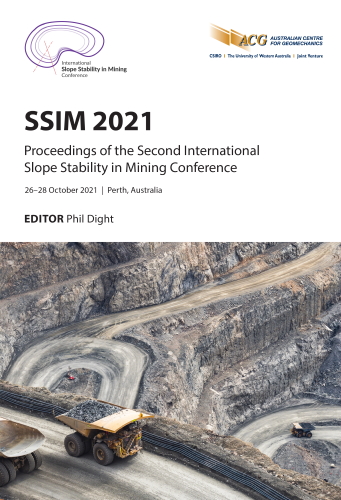Geotechnical design uncertainty and data collection

|
Authors: Mathis, JI |
DOI https://doi.org/10.36487/ACG_repo/2135_24
Cite As:
Mathis, JI 2021, 'Geotechnical design uncertainty and data collection', in PM Dight (ed.), SSIM 2021: Second International Slope Stability in Mining, Australian Centre for Geomechanics, Perth, pp. 387-400, https://doi.org/10.36487/ACG_repo/2135_24
Abstract:
Rock mass characterisation, and subsequent engineering, is founded upon the data collected: data that reflects characteristics of the material that will be utilised for design. Thus, the varying geotechnical characteristics of rock fabric, major structure, lithology, alteration, and the plethora of other individual and combined parameters that are to be utilised for design of an excavation in rock must be carefully sampled by the field program, then appropriately reduced in order for it to be adequately represented by modelling. At present, our modelling capabilities outstrip, in many instances, the data collected for design purposes. Collected data is hammered into a form, either by analytic approximations or empirical means, such that it can be included in relatively sophisticated models. To speak of design reliability as a quantifiable term in such an environment is absurd. While the impact of the collected data can be quantified in terms of its impact on design uncertainty, if this data is unreliable to begin with or excludes critical information, then the resulting reliability bounds are meaningless as well. This paper explores this concept in an attempt to illustrate some potential effects and to reinforce the absolute necessity of collecting accurate, verifiable data prior to attempting any statistically based stability assessments.
Keywords: discontinuity, mapping, structure, interpretation, strength, uncertainty
References:
ASTM D5607−08 2008, Performing Laboratory Direct Shear Strength Tests of Rock Specimens Under Constant Normal Force, ASTM International, West Conshohocken.
Mathis, JI 2020a, ‘Capturing/interpreting non-obvious slope controlling structures’, in PM Dight (ed.), Paste 2020: Proceedings of the 2020 International Symposium on Slope Stability in Open Pit Mining and Civil Engineering, Australian Centre for Geomechanics, Perth, pp. 499–506,
Mathis, J 2020b, Guidelines for Slope Performance Monitoring, CRC Press, Boca Raton.
Mathis, J & Elmouttie, M 2018, ‘The influence of fabric mapping bias on applied DFN’s and its impact on estimation of failure’, Proceedings of the Second International Discrete Fracture Network Engineering Conference, American Rock Mechanics Association, Alexandria.
Mathis, JI 2014, ‘Bench face angle distributions – the requirement for DFN analysis’, Proceedings of the 1st International Conference on Discrete Fracture Network Engineering, Canadian Rock Mechanics Association, Vancouver.
Mathis, JI 1988, Development and Verification of a Three-dimensional Rock Joint Model, PhD thesis, University of Luleå, Luleå.
© Copyright 2025, Australian Centre for Geomechanics (ACG), The University of Western Australia. All rights reserved.
View copyright/legal information
Please direct any queries or error reports to repository-acg@uwa.edu.au
View copyright/legal information
Please direct any queries or error reports to repository-acg@uwa.edu.au